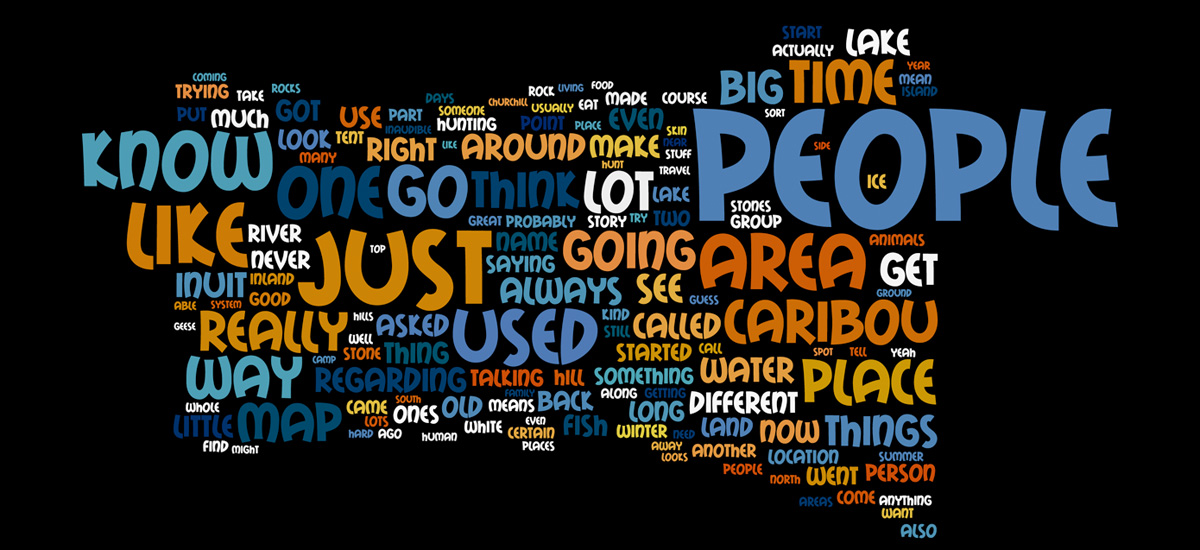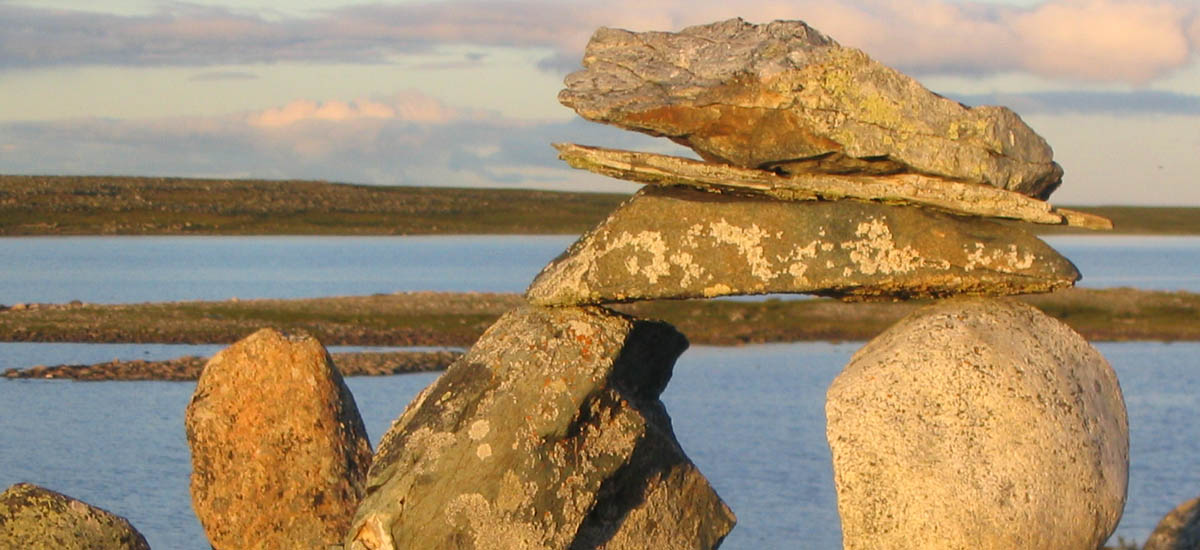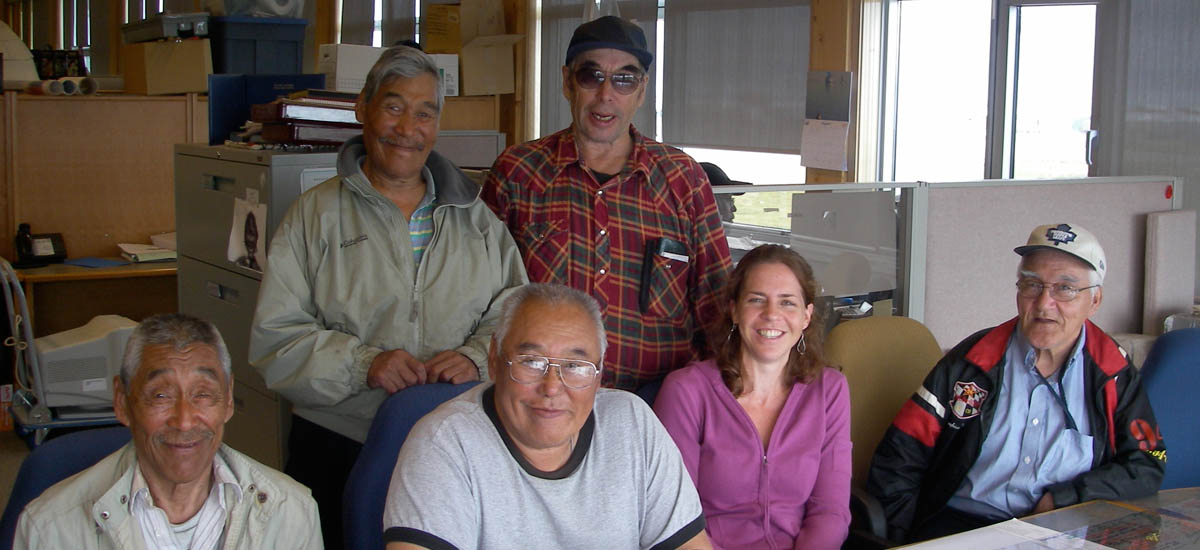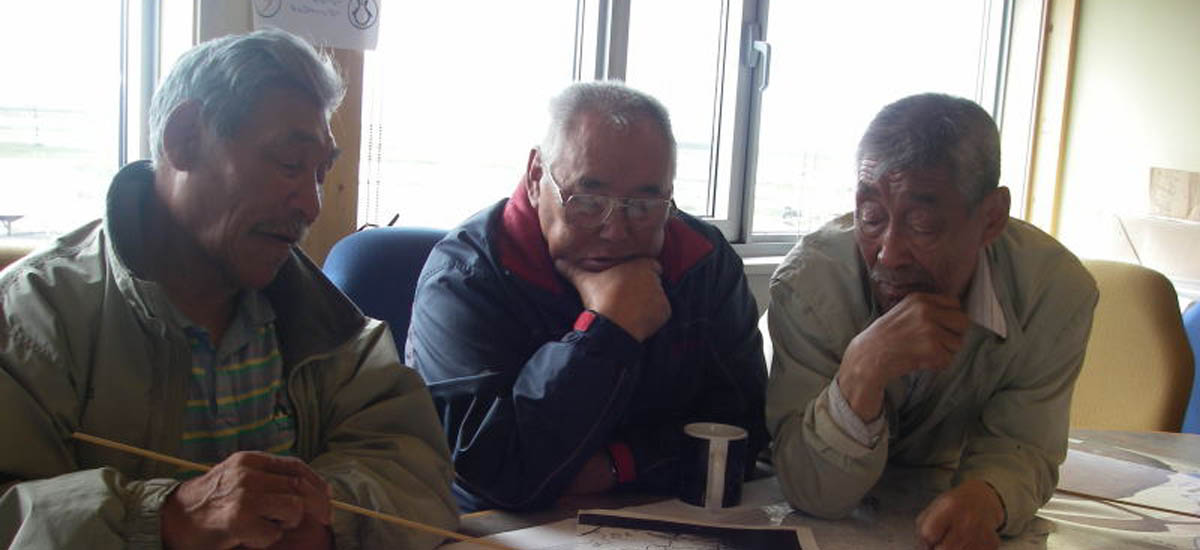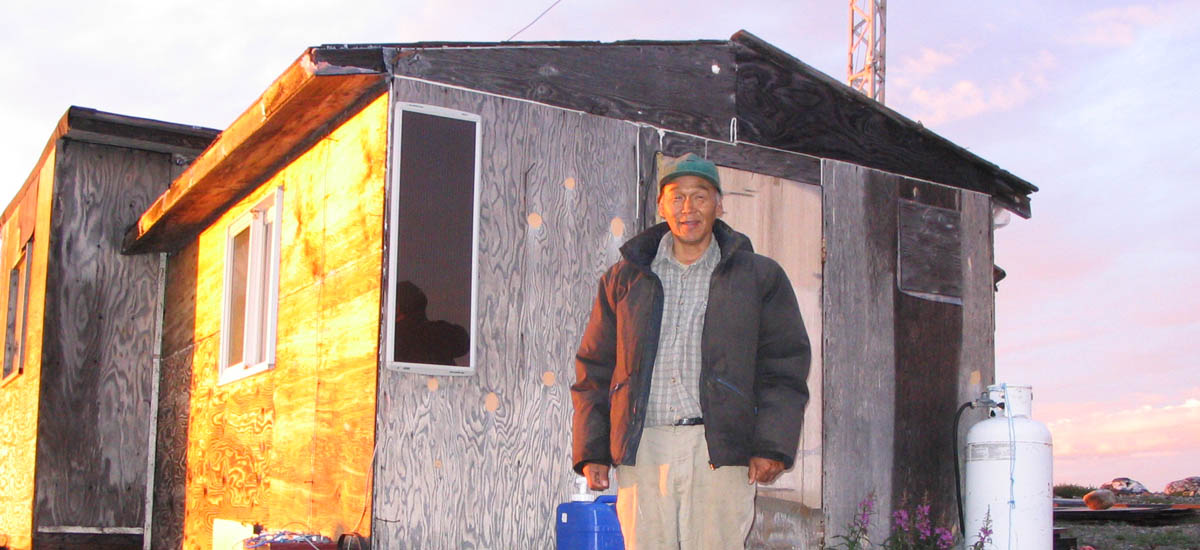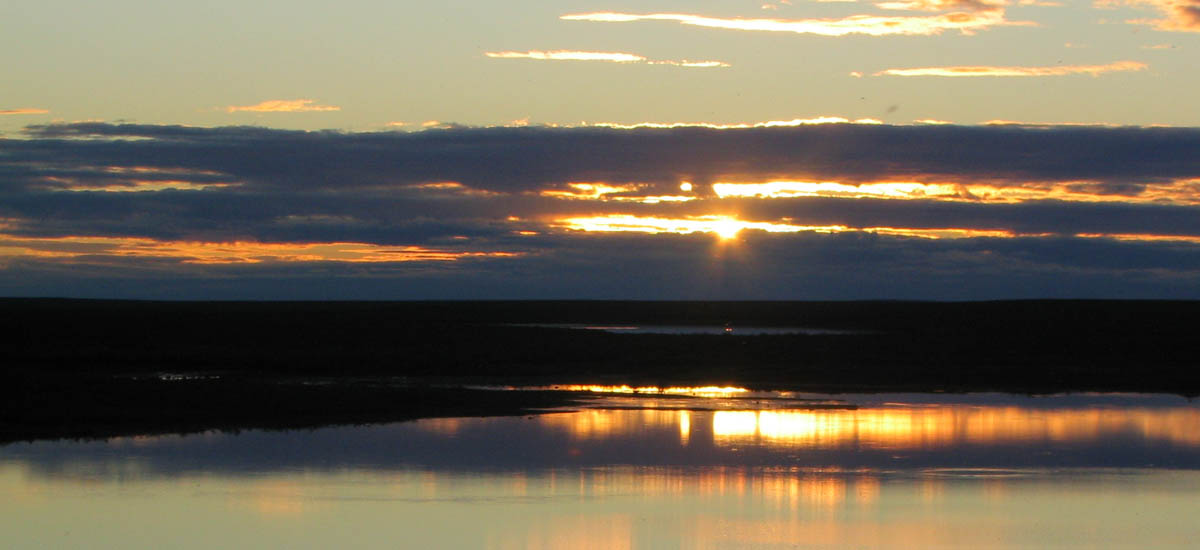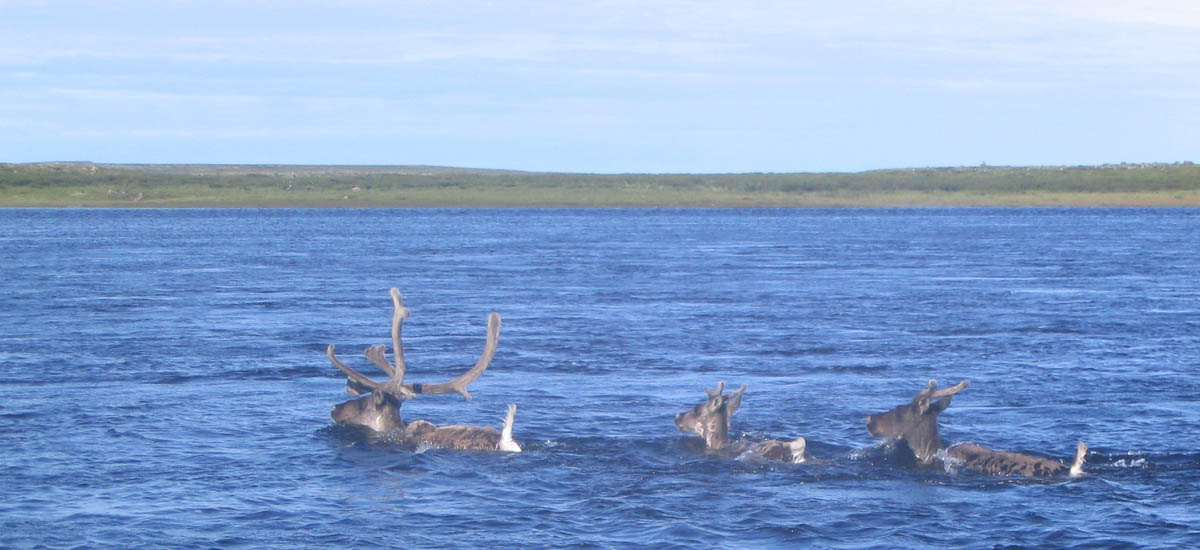Introduction
The community of Arviat, Nunavut, is located 400 km north of Churchill, Manitoba, on the west coast of Hudson Bay. It is currently home to Inuit groups collectively referred to as the "Caribou Inuit" by outside researchers, in recognition of their primary focus on caribou subsistence during the historic period. Inuit of this region divide themselves into a series of loosely associated local or "miut" groups. Elders associated with this project have named seven "Caribou Inuit" groups: the Paatlirmiut, Nuvurugmiut, Ahiarmiut, Kivihiktormiut, Qainirmiut, Hauniqtuurmiut, and Harvaqtuurmiut. Among these, the Paatlirmiut are the principal inhabitants of the Arviat area and the Maguse River drainage.
Why Document Traditional Inuit Qaujimajatuqangiit?
The seeds of the Arviat Archaeology and Oral History Project were sown when archaeologists, educators, and Paatlirmiut Elders recognized a need to document the vast Inuit Qaujimajatuqangiit of the Arviat region and make it available for future generations. It is hoped that with this knowledge, younger people will acquire the skills necessary to live and navigate the contemporary world in an Inuit way.
How it All Began...
The project began in 2006 with a small group of dedicated Elders, translators, and researchers from the University of Calgary. In those days, 1:250,000 map sheets were placed under plastic mylar sheets. Elders would identify important locations and write place names on the plastic sheets using marker pens. These sheets were then scanned and integrated into a Geographic Information System (GIS). Over the years, this system has evolved to include technologies such as Google Earth and Facebook, making the process of recording information much faster.
What you see here could be considered a "Wikipedia of Inuit Qaujimajatuqangiit" for the Arviat region. We hope the information it contains will continue to grow, as Elders recurrently add new place names, activities, and other forms of knowledge, while also editing and revising existing entries.
Who We Are
Many people have helped make this project possible. Foremost among them are Donald Uluadluak, Louis Angalik, and, until his recent passing, Mark Kalluak. These three dedicated individuals work for the Nunavut Department of Education, where they guide and structure curriculum and other educational initiatives. Phillip Kigusiutak and Luke Kiniksi, both residents of Arviat, also assisted with the project. All of these Elders gave generously of their time.
Mark Kalluak was Qairngnirmiut and spent part of his youth at an interdenominational mission, where he learned to read and write English. He was a published author, an accomplished researcher, and a Fellow of the Order of Canada.
Donald Uluadluak, Louis Angalik, Philip Kigusiutak, and Luke Kiniksi are all Paatlirmiut who were born on the land and have lived traditional lives as hunters and trappers. Each retains an intimate knowledge of their traditional social structures and organization, as well as incredibly detailed knowledge about how to live, navigate, travel, trap, and subsist along the coast of western Hudson Bay and the adjacent Barrenlands. Having trapped, traveled, and frequented different areas along the coast and inland, their collective knowledge spans thousands of kilometers.
Dr. Peter Dawson is a Professor of Archaeology at the University of Calgary who specializes in Digital Archaeology. Peter spent 12 years conducting archaeological fieldwork in the Arviat region with Luke Suluk. It was through this work that Arctic IQ was conceived.
Dr. Natasha Lyons is co-owner of Ursus Consulting and an Adjunct Professor at Simon Fraser University. Natasha facilitated the oral history component of this project, aided by the excellent interpretation skills of Joe Karetak and Mark Kalluak.
Joe Karetak is Team Lead, Culture and Heritage, at the Government of Nunavut. He worked extensively on this project as a cultural liaison and translator, bringing his immense knowledge to support this work.
Kenneth Buck is a software engineer who designed and built Arctic IQ as part of a student project many years ago. Kenneth became the de facto curator of this site, ensuring that it remained accessible for over a decade.
What's Next...
Arctic IQ is now over a decade old. Many of those involved are no longer with us. The work was originally undertaken to support the wishes of Donald, Louis, and Mark, who hoped that the Inuit Qaujimajatuqangiit of the Arviat region would be preserved and known to others. We therefore hope to maintain this website and the knowledge it contains for at least another ten years.

